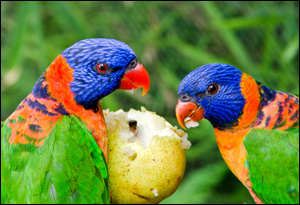 Cameras have come a long way over the past 50 years. New cameras mean better quality images in less time. However, there are downsides to using a JPEG (enhanced) image over a RAW (unprocessed) one. With that in mind, here are five tips for taking better photographs:
Cameras have come a long way over the past 50 years. New cameras mean better quality images in less time. However, there are downsides to using a JPEG (enhanced) image over a RAW (unprocessed) one. With that in mind, here are five tips for taking better photographs:
1 – Good Lighting
When it comes to taking a good quality photograph, it is important to have good lighting, or at least good potential, particularly with RAW images.
As much as can be done with RAW pictures, one cannot enhance features that are not in the picture, and without at least some good lighting not much can be done to improve the image, and it would be left unfinished to a certain extent. JPEG pictures also require good lighting, as without this the image, despite defaulting to the best potential settings for that image, will still seem dark.
2 – Steady Hands
It may seem trivial to mention, but steady hands are vital for a good RAW image. Why? Because, much like good lighting, the picture must already be clear before editing can take place, otherwise your potential quality decreases quite a bit. This is less important with JPEG images, as they tend to focus and steady the image before taking the picture.
3 – Focus
Good focus can make or break an image. When it comes to taking a great photograph, one must be careful that the main subject of the photograph is in focus, while the background is less in focus, sometimes deliberately out of focus for the purpose of contrast. With JPEG files this is more difficult, as the images tend to line themselves up before the picture is taken, and picking exactly what you want when defaults are chosen can be a stubborn, trial-and-error process.
With RAW files one does not have these burdens, and can freely take the picture with or without deliberate strong focus on the subject, and edit in a blur or perhaps lighting later, which negates the need to take a perfect image at that moment, and allows for more liberty in taking the picture.
4 – Zoom
People love detail. When shooting a good image it is often better to highlight small details of something than go for a bigger picture, so to speak. JPEGs will automatically pick out the parts that stick out and highlight them, and this can be a nice touch, but for a truly breathtaking image take a RAW picture and then enunciate the lighting/angles yourself through editing. You can thank me later.
5 – Weather
More often than not the weather defines the sort of image you will get. Overcast skies are much better for “grittier” images with less color, while blue clear skies are often better for more lighting and color. When using RAW files or JPEG files, choosing your weather still has a large impact on the overall theme of the picture, so keep that in mind. That said, when it comes to the better image overall in this scenario, RAW is the answer, because no matter how the image comes out, it can be improved, and lights from different parts can be brought into focus, while with JPEG you are stuck with what you get.
Author: Stephen Brooks, Wedding Photographer London. Photo courtesy of Nick Egglington.